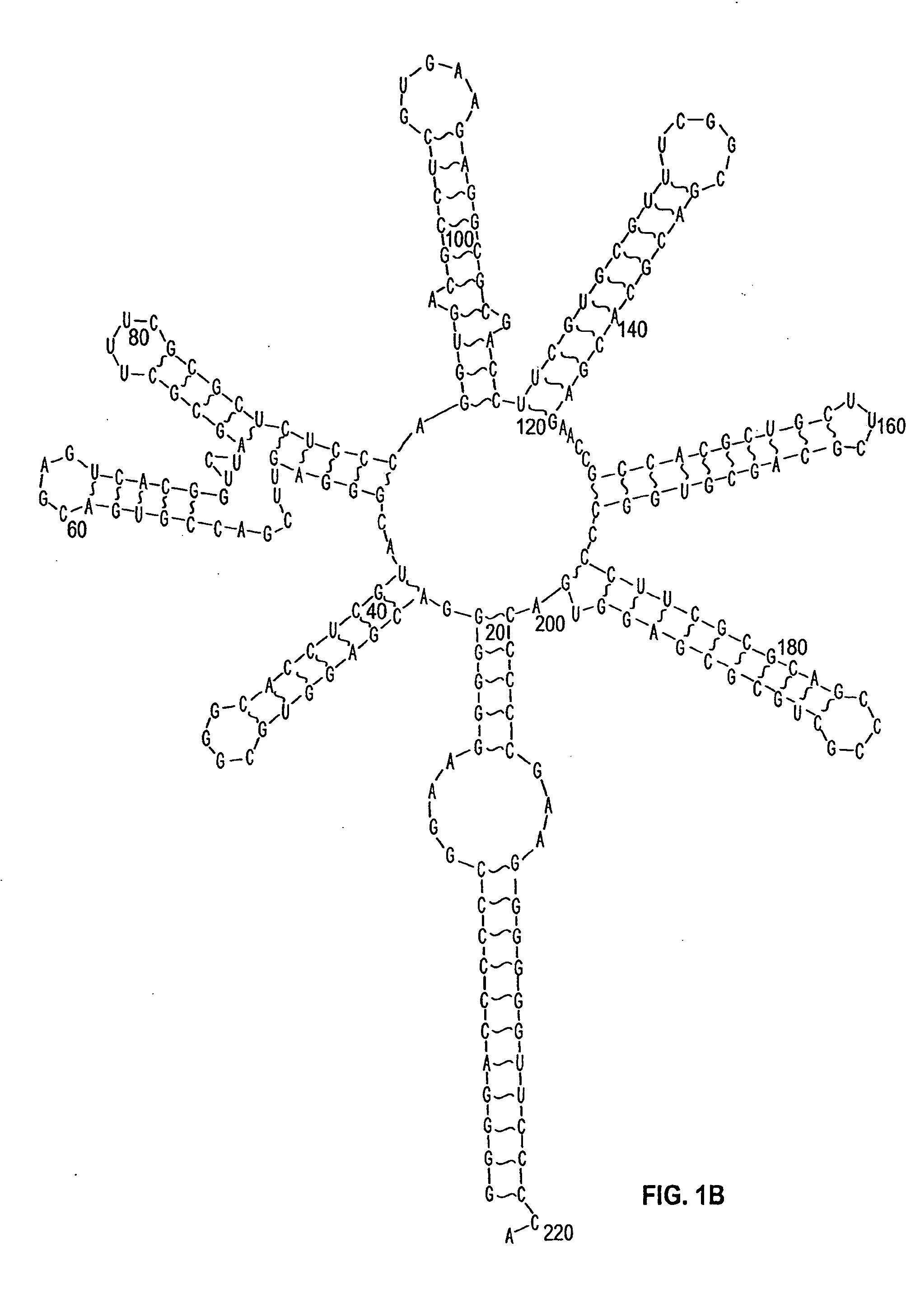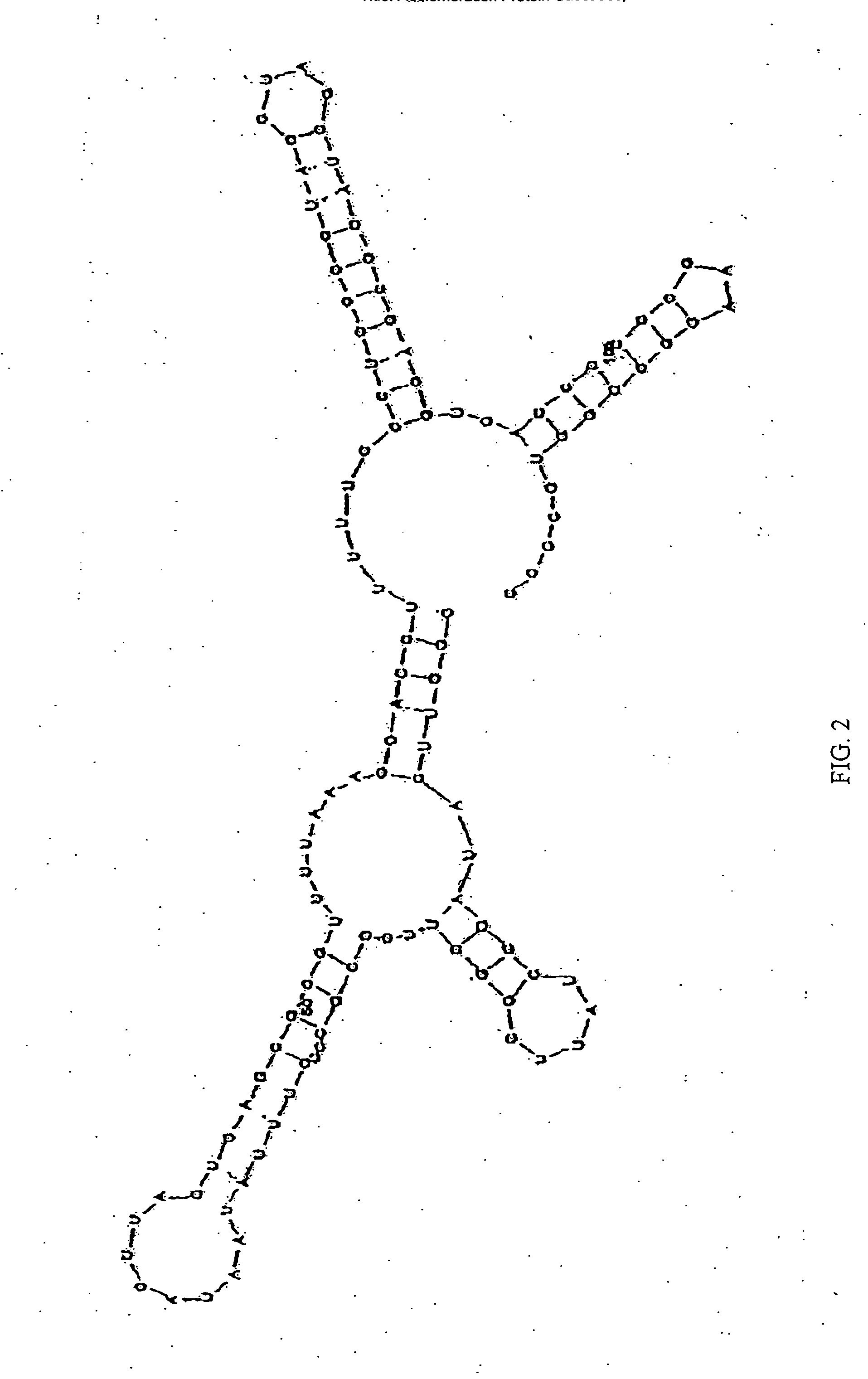Agglomeration protein cascades, compositions and methods regarding the same
a technology of agglomeration protein and cascade, applied in the field of agglomeration protein cascade, composition and method regarding the same, can solve the problems of aging cells not having the energy to run the proteosome or ubiquitin system, threatening the population of deer, and donors' blood, organs and tissues may be contaminated without the knowledge of the donor or recipient,
- Summary
- Abstract
- Description
- Claims
- Application Information
AI Technical Summary
Problems solved by technology
Method used
Image
Examples
example 1
[0377] An example of a protocol for forming an agglomeration complex is as follows: Incubate about 0.83 pmoles of human recombinant prion protein (“hrPrP”, a prion protein) with about 0.2 pmoles (or with 1.2 pmoles) of a NA antibody like RQ11+12. The RNA-protein binding is performed in 20 μl of a reaction mixture consisting of approximately 50 mM MOPS, pH 7.4; 5 mM MgCl2; 50 mM LiCI; 1 mM DTT; 1 μg tRNA; 80-100 μg / μl BCS; 0.05% DOXY and 0.05% NP-40. The reaction mixture is incubated for about 20 minutes at around room temperature.
[0378] The prion protein employed can be hrPrP, PrPC as well as other prion proteins. The proteins will form one or more agglomerations under suitable conditions. These agglomerations can then be detected, for example, using electron microscopy. The formation of an agglomeration complex is indicative of the presence of a CBF in the reaction mixture.
Example 2
[0379] The method of Example 1 can be augmented by examining protease K resistance of the prion pr...
example 2
[0393] The desired system for expression of RNA chaperones will contain a selectable marker for use in producing a transgenic cell line. Because this construct will be used to generate transgenic mice in the Phase II project, we chose to use commercially available pTRE-tight vector with tetracycline (tet) inducible promoter system, which, according to Clontech specification, has a lower background of expression than the previously available pTRE vector and is known to work in transgenic mice. The tet system uses the tet derivative doxycycline as an inducer of tightly regulated in vivo in a dose-dependent manner over a wide range of doxycycline concentrations and requires administration of doxycycline only when transgene expression is required. Doxycycline is a safe and effective clinical and veterinary antibiotic that is inexpensive and widely available.
Work in Progress: Modifications have been made to the Original pTRE Tight Vector
[0394] In order to ensure the functions of the ne...
example 3
Construction of a Vector for Drosophila Melanogaster
[0424] The pUC plasmid was modified to incorporate a DNA construct comprising the Drosophila heat shock promoter, the DNA for RQ 11+12, linked to a gene for white eyes in a manner known in the art. This vector is multiplied in E. coli and harvested in the manner known to individuals skillful in art.
PUM
| Property | Measurement | Unit |
|---|---|---|
| temperature | aaaaa | aaaaa |
| pH | aaaaa | aaaaa |
| pH | aaaaa | aaaaa |
Abstract
Description
Claims
Application Information
 Login to View More
Login to View More - R&D
- Intellectual Property
- Life Sciences
- Materials
- Tech Scout
- Unparalleled Data Quality
- Higher Quality Content
- 60% Fewer Hallucinations
Browse by: Latest US Patents, China's latest patents, Technical Efficacy Thesaurus, Application Domain, Technology Topic, Popular Technical Reports.
© 2025 PatSnap. All rights reserved.Legal|Privacy policy|Modern Slavery Act Transparency Statement|Sitemap|About US| Contact US: help@patsnap.com



